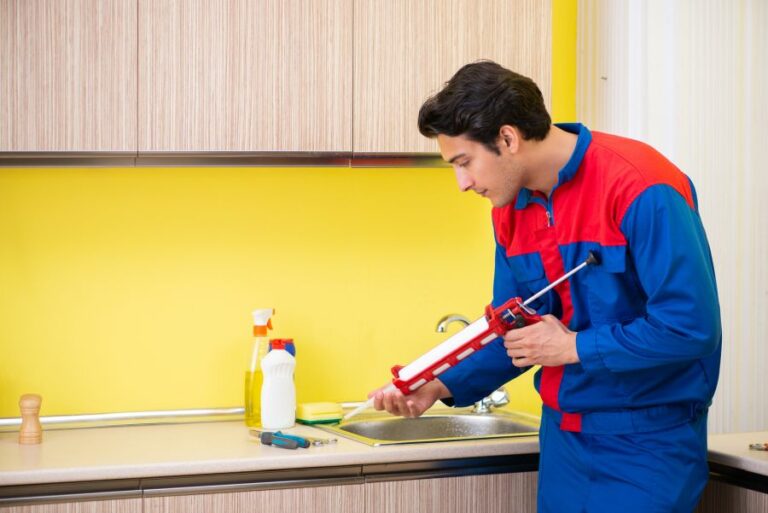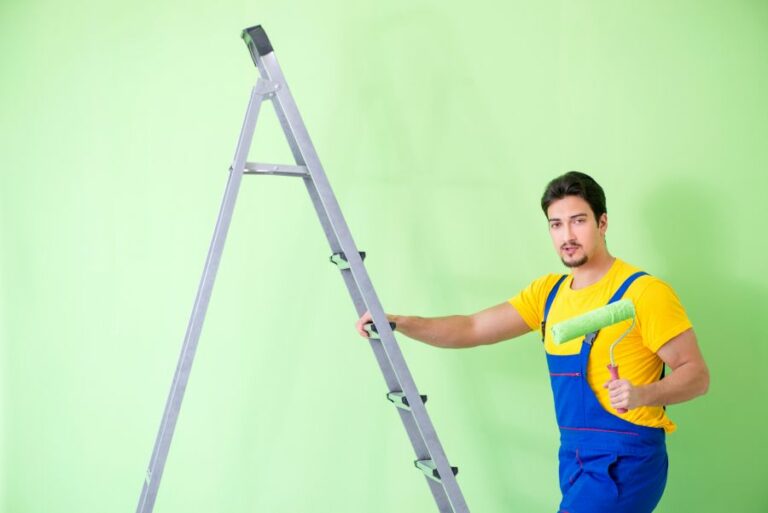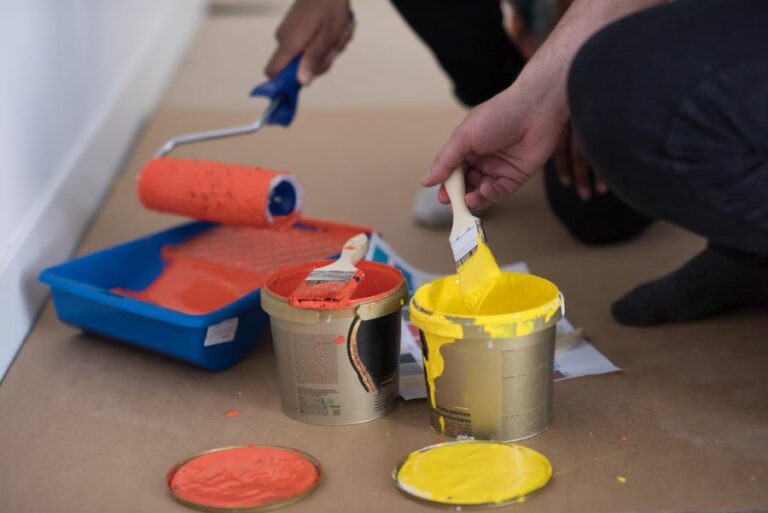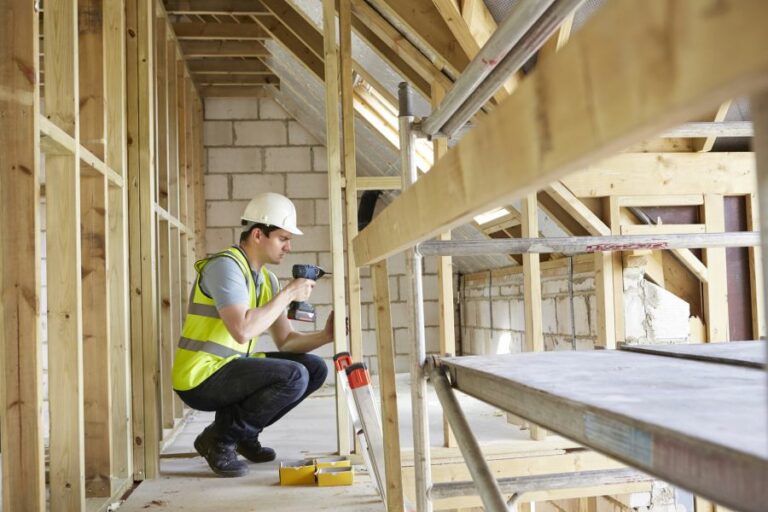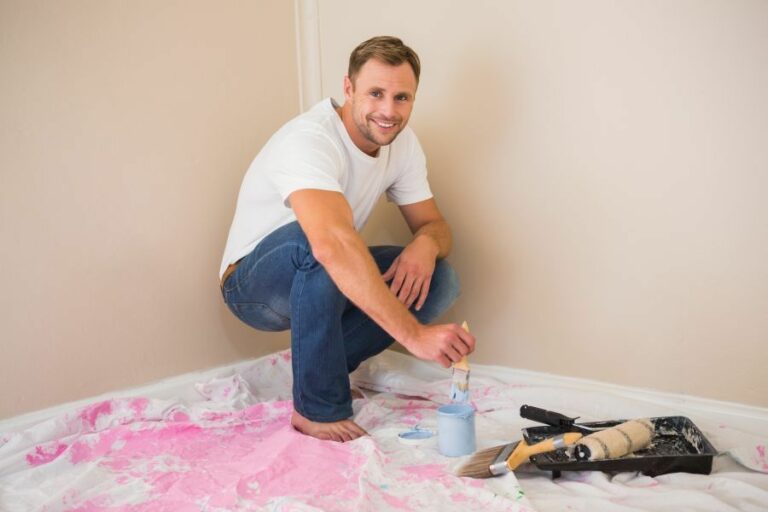Thorough Outdoor Cleaning With Pressure. What Pros Say
Are you struggling with stubborn dirt and grime on your outdoor surfaces? Don’t worry. We’ve got you covered. Thorough outdoor cleaning with pressure effectively transforms your exteriors and makes them look brand new. In this discussion, we will guide you through the appropriate techniques and equipment, ensuring that your outdoor cleaning experience is efficient, effortless, and eco-friendly.
Thorough outdoor cleaning with pressure:
Pressure washing is an efficient method for outdoor cleaning that restores surfaces by removing dirt, grime, mold, and mildew. It boosts curb appeal, prevents damage, and saves time compared to traditional cleaning methods. A thorough outdoor cleaning requires selecting the appropriate equipment, using suitable nozzles, testing a small area, pre-treating surfaces, working in patterns, and thoroughly rinsing. Safety precautions include wearing protective gear and maintaining a safe distance.

Are you looking to achieve a pristine outdoor space? Discover the ultimate guide to thorough outdoor cleaning with pressure washers! We’ve got tips, tricks, and step-by-step instructions to help you transform your outside area. Read on to uncover the secrets to a spotless exterior.
Contents
- 1 Comprehensive Pressure Washing for Outdoor Spaces
- 2 Is Pressure Washing Suitable for Exteriors?
- 3 Ideal PSI for Cleaning Home Exteriors
- 4 Pressure Washing Techniques for Tall House Areas
- 5 Pressure Wash vs. Soft Wash: Key Differences Explained
Comprehensive Pressure Washing for Outdoor Spaces
Cleaning your home’s exterior and outdoor spaces is a crucial part of maintaining its overall appearance and value. One effective and efficient method to achieve a thorough outdoor cleaning is using a pressure washer.
• Benefits of Pressure Washing
Pressure washing is a highly efficient method for outdoor cleaning that can help you restore surfaces and objects to their original appearance. It can remove dirt, grime, mold, and mildew, as well as other contaminants that can be harmful to your home and health.
Here are some key benefits of pressure washing:
- Boosts Curb Appeal: A well-maintained home with a clean exterior can increase its curb appeal and overall value. Pressure washing can help make your home more attractive to potential buyers.
- Prevents Damage: Regular pressure washing can prevent damage caused by mold, mildew, and algae growth, which can lead to costly repairs if not addressed.
- Saves Time and Effort: Pressure washing is faster and more efficient than traditional scrubbing and cleaning methods, allowing you to cover large areas in less time.
• Pressure Washing Tips for Effective Outdoor Cleaning
To achieve a thorough outdoor cleaning using a pressure washer, here are some expert tips to keep in mind:
– Choose the Right Equipment
The right pressure washer can make all the difference in the quality of your cleaning results. Consider factors such as the type of surface you’re cleaning, the amount of dirt or grime present, and your budget when selecting the right pressure washer for your needs.
There are two main types of pressure washers: gas-powered and electric. Gas-powered washers are more powerful and suited for larger, more stubborn cleaning tasks, while electric washers are more energy-efficient and suitable for smaller tasks.
Additionally, consider the pressure rating (measured in PSI) and water flow rate (measured in GPM) to ensure you have the right machine for the job.
– Use Appropriate Nozzles and Accessories
Different pressure washer nozzles and attachments can determine the water flow pattern and pressure output.
Experiment with various nozzle sizes and angles to find the best combination for your project. For instance, a wider spray angle is best for delicate surfaces, while a narrow angle can tackle tougher grime.
– Test a Small Area First
Before applying pressure to the entire surface, test a small, inconspicuous area to gauge how the material reacts and to determine the right pressure and nozzle settings.
– Pre-Treat the Surface
Some surfaces may require pre-treatment with a cleaning solution that can help break down stubborn dirt and grime. Remember to follow the manufacturer’s instructions and choose a cleaner designed for your specific surface or material.
– Work in Patterns
To avoid streaks or uneven cleaning results, work in a methodical pattern, starting at the top and moving downward. Overlap each pass slightly to ensure full coverage.
– Rinse Thoroughly
After pressure washing, give the surface a thorough rinse to remove any remaining soap, dirt, or debris. This can help prevent residue from forming, leading to a cleaner, fresher appearance.
• Staying Safe during Pressure Washing
Pressure washing can be dangerous if proper safety precautions are not followed. Here are some essential safety tips to remember:
- Wear Proper Protective Equipment: Use safety goggles, gloves, closed-toe shoes, and ear protection when operating a pressure washer.
- Keep a Safe Distance: Maintain a distance of at least six feet between the nozzle and the surface being cleaned to prevent damage or injury.
- Avoid High-pressure Spray: Never aim the pressure washer at yourself or others, as the high-pressure spray can cause severe injuries.
- Secure the Area: Keep pets and children away from the area you are working on to prevent accidents.
- Follow the Manufacturer’s Instructions: Read the pressure washer’s operating manual and follow all safety and usage guidelines.
In conclusion, pressure washing is a highly effective method for thorough outdoor cleaning that can help improve your home’s appearance while preventing damage caused by accumulated dirt and grime.
By choosing the right equipment, using appropriate techniques, and following safety precautions, you can achieve a clean and well-maintained outdoor space.
Is Pressure Washing Suitable for Exteriors?
Pressure washing is an effective cleaning method for removing dirt, grime, and other unwanted substances from various surfaces. It involves the use of high-pressure water sprays that can clean surfaces quickly and efficiently.
But can you pressure wash outside? The answer is yes! In this comprehensive guide, we’ll explore everything you need to know about outdoor pressure washing, including what can be cleaned, how to do it safely, and the benefits that come with it. Let’s get started!
• The Benefits and Importance of Outdoor Pressure Washing
Outdoor pressure washing can provide several benefits, such as:
– Enhancing Curb Appeal
A clean, well-maintained exterior can greatly improve the appearance of your property. Pressure washing can remove dirt, mold, and other unsightly substances, making your home or business look its best.
– Preserving Surfaces
Grime, algae, and other substances can cause surfaces to deteriorate over time, leading to costly repairs or replacements. Regular pressure washing can help prevent damage and maintain your property’s value.
– Safety and Health
Mold, mildew, and algae can be slippery and pose a risk of slipping and falling. By removing these substances, you can make your outdoor spaces safer. Also, pressure washing can remove allergens and other irritants that can impact your health.
• What Can Be Cleaned With A Pressure Washer?
There are numerous outdoor surfaces that can benefit from pressure washing, such as:
- Driveways and walkways
- Siding and exterior walls
- Roofs
- Decks and patios
- Outdoor furniture
- Fences
- Pool areas
Keep in mind that not all surfaces can handle the force of a pressure washer. For example, delicate surfaces like painted wood, stucco, and some types of brickwork may require a gentler approach.
• How To Pressure Wash Safely
Before you begin pressure washing, it’s essential to take some precautions to ensure you complete the task safely and effectively:
– Choose The Right Equipment
Not all pressure washers are created equal. There are various pressure washers on the market, each with different capabilities and features.
Choose a pressure washer with an appropriate PSI (pounds per square inch) for the job, as higher PSI machines can cause damage to some surfaces. For most residential cleaning tasks, a pressure washer with 1,300 to 2,800 PSI should suffice.
– Wear Protective Gear
Pressure washing can pose various risks, including flying debris and high-pressure water spray. Wear appropriate protective gear, such as closed-toe shoes, gloves, and goggles, to protect yourself from any injury.
– Prepare The Area
Before you start pressure washing, clear the area of any debris or obstacles that could pose a tripping hazard. Cover any exposed electrical outlets to prevent water damage or electrical shock.
– Use The Correct Techniques
Hold the pressure washer nozzle at the correct angle (usually about 45 degrees) and distance (around 12 inches) from the surface.
Start with a low-pressure setting, gradually increasing the pressure as needed. Do not point the pressure washer nozzle directly at people, animals, or delicate surfaces that require a gentler approach.
– Use Environmentally Friendly Detergents
Many pressure-washing detergents contain chemicals that can be harmful to the environment. Opt for environmentally friendly options to minimize your impact on nature.
• The Benefits of Hiring a Professional Pressure Washing Service
While outdoor pressure washing can certainly be done on your own, there are several advantages to hiring a professional service:
– Expertise and Efficiency
Professional pressure washing technicians know the ins and outs of their equipment and have experience cleaning various surfaces. This generally leads to better results in a shorter amount of time.
– Safety
Professional pressure washing services are trained to use their equipment correctly, minimizing the risk of accidents or damage to your property.
– Customized Service
Professional pressure washing services can assess your specific cleaning needs and tailor their approach to achieve the best possible results.
– Time savings
Pressure washing can be a time-consuming task, especially if you’re unfamiliar with the equipment. Hiring a professional service allows you to focus on other important tasks.
• In Conclusion
Outdoor pressure washing is the ultimate solution for cleaning various surfaces around your property. It can enhance curb appeal, preserve surfaces, and create a safer environment.
While the task can be done independently, hiring a professional pressure washing service ensures you receive an efficient and quality clean.
Area | Can Pressure Wash? |
|---|---|
Concrete Driveway | Yes |
Brick or Stone Patio | Yes |
Wood Deck or Fence | Yes (with caution) |
Vinyl Siding | Yes |
Stucco Exterior | Yes (with caution) |
Outdoor Furniture | Yes |
Car or Boat | Yes |
Ideal PSI for Cleaning Home Exteriors
Cleaning the exterior of your house is essential for maintaining your home’s appearance and preventing damage from mold, mildew, and other contaminants. One of the most effective ways to clean the exterior of your house is by using a pressure washer.
• Choosing the Right PSI for Home Exterior Cleaning
The appropriate PSI to clean your house’s exterior will depend on the type of surface you are cleaning. Different surfaces require different pressure levels to ensure effective cleaning without causing damage.
– Vinyl and Aluminum Siding
When cleaning vinyl or aluminum siding, you should stick to a lower PSI level of around 1,300 to 2,400. This PSI range is safe for these materials while still providing a thorough cleaning. Using a higher PSI may result in damage to your siding, such as warping or denting.
– Brick and Concrete
Brick and concrete surfaces can handle higher PSI levels, typically between 2,500 and 3,000. The increased pressure effectively removes dirt, algae, and other debris from the porous surfaces. However, it’s important to be cautious when cleaning brick, as higher pressures may cause damage to the mortar.
– Wood
Wood surfaces, such as decks and fences, require a careful approach when pressure washing. The ideal PSI for cleaning wood surfaces is between 1,200 and 1,500. Exceeding these pressure levels may lead to damage to the wood, such as splintering and gouging.
• Essential Pressure Washing Tips for Home Exteriors
When pressure washing your home’s exterior, keep these tips from experienced professionals in mind:
– Use the Right Nozzle
Pressure washer nozzles come in various sizes and spray patterns, which impact the pressure of the water. Selecting the appropriate nozzle for your cleaning task is essential for achieving the desired results and avoiding damage.
Wider spray patterns are ideal for delicate surfaces, while narrower patterns are better for stubborn stains and heavy-duty cleaning.
– Test a Small Area First
Before pressure washing your entire house, test a small, inconspicuous area with your selected PSI level and nozzle. This will help you determine whether the pressure is suitable for the surface or if adjustments are needed.
– Keep a Safe Distance
Maintaining a safe distance between the pressure washer nozzle and the surface being cleaned is crucial. A good rule of thumb is to start at least 24 inches away from the surface and adjust as needed to find the optimal distance for effective cleaning without damaging the material.
– Use Appropriate Cleaning Solutions
In some cases, combining water with a suitable cleaning solution will help remove stubborn dirt and contaminants more effectively. Be sure to follow the recommendations for cleaning solutions provided by the surface material manufacturer or consult a professional for guidance.
– Protect Your Landscaping
Pressure washing can cause runoff containing dirt, debris, and chemicals that may be harmful to your plants and lawn. Before beginning your pressure washing project, take necessary precautions to protect your landscaping, such as covering nearby plants with a tarp or sheet.
• Conclusion
In conclusion, the appropriate PSI for cleaning the outside of your house will depend on the surface you are working with. Keep in mind the recommended PSI levels for various materials, and always approach each cleaning task with care to avoid causing damage.
With the proper pressure, nozzle selection, and techniques, you can improve the appearance of your home’s exterior and protect it from harmful contaminants.
How much PSI is needed to clean the outside of the house?
Surface Material | Minimum PSI | Maximum PSI | Recommended PSI |
|---|---|---|---|
Brick | 1500 | 4000 | 2500-3000 |
Wooden siding | 1000 | 3000 | 1200-1500 |
Vinyl siding | 600 | 1500 | 800-1000 |
Stucco | 1000 | 4000 | 2000-2500 |
Concrete | 2000 | 5000 | 3000-3500 |
Pressure Washing Techniques for Tall House Areas
Pressure washing the exterior of a house is an effective method to keep it looking fresh and clean, but one significant challenge lies in reaching and cleaning high areas.
• Control the Pressure
Getting the correct pressure is essential for high areas. Applying too much pressure can result in damage to delicate surfaces, while insufficient pressure may be ineffective in removing grime or dirt.
For most residential applications, a pressure washer with around 2,000 to 3,000 PSI (pounds per square inch) would suffice.
Maintaining a distance of at least 12 inches from the surface will also help prevent any unwanted damage. As a precaution, test the pressure wash in an inconspicuous area before starting.
• Use Proper Nozzles and Attachments
Choosing the right nozzle for your pressure washer is crucial for maneuvering in high areas. A 25-degree green nozzle or a 40-degree white nozzle is a better choice for a balanced mix of pressure and coverage for most house exteriors.
Remember to avoid using high-pressure nozzles such as the 0-degree red nozzle and 15-degree yellow nozzle for high areas, as they could cause potential damage to your siding or paint.
In addition, invest in specialized attachments like adjustable wands, extension wands, or telescoping wands to help you reach high areas without any trouble.
These attachments can lengthen the reach of your pressure washer by up to 24 feet, making it easier and safer to clean tall surfaces without using a ladder.
• Utilize a Ladder When Necessary
In some cases, using a ladder may be unavoidable. When pressure washing high areas with a ladder, remember to follow the necessary precautions and proper ladder safety guidelines:
- Set your ladder on a stable, even surface.
- Use a ladder stabilizer or standoff to maintain stability and prevent siding damage.
- Always maintain three points of contact (two hands and one foot or one hand and two feet) on the ladder.
- Use a pressure washer gutter cleaner attachment to safely clean gutters from the ground.
• Employ Detergents and Cleaners
Using appropriate detergents and cleaners for your house exterior can make the job of pressure washing high areas more manageable. Detergents help break down accumulated dirt and debris while also providing a residual protective layer. Follow these tips to effectively use detergents and cleaners:
- Choose a detergent specifically designed for your siding material (vinyl, wood, brick, etc.)
- Use a soap applicator nozzle on your pressure washer to apply detergent evenly.
- Allow the detergent to soak for a few minutes before rinsing.
- Rinse from top to bottom using a low-pressure spray, ensuring all soap is removed.
Note: Refrain from letting detergent dry on the surface, as it can leave unsightly residue or streaks.
• Follow a Systematic Approach
When pressure washing the high areas of your house, work in sections to ensure that you clean each area evenly and thoroughly. Follow a top-to-bottom approach, starting with the highest point and working your way down.
This way, you’ll move dirt and debris from higher surfaces and prevent areas you already cleaned from getting dirty again.
• Additional Safety Tips
- Be cautious when pressure washing around windows, electrical outlets, or vents.
- Turn off the electricity supply to any outdoor outlets, fixtures, or appliances.
- Ensure that the pressure washer unit is on a stable, level surface and away from potential water hazards.
- Wear appropriate personal protective equipment, such as safety glasses or goggles and heavy-duty gloves.
In conclusion, the key to successfully pressure washing high areas of a house is to utilize the correct pressure, attachments, detergents, and techniques while adhering to all necessary safety precautions. By doing so, you can effectively clean and maintain the appearance of your home’s exterior.
Step | Description |
|---|---|
1 | Choose the right pressure washer with adequate power and nozzle type for your specific cleaning task. |
2 | Prepare the pressure washer by connecting it to water and power sources and setting up the necessary attachments and hoses to reach high areas. |
3 | Use a telescoping wand or extension wand to extend your reach, allowing you to clean higher areas without using a ladder or scaffolding. |
4 | Apply detergent at low pressure using a soap nozzle/attachment, starting from the bottom and working your way up to avoid streaks. |
5 | Allow the detergent to soak for several minutes, but do not let it dry on the surface to prevent damage to the siding or paint. |
6 | Switch to a higher-pressure nozzle and begin rinsing the detergent from the siding, working from the top down (use a 25-degree nozzle for most siding materials). |
7 | Move the nozzle in a consistent, overlapping motion while maintaining a safe distance away from the surface to prevent damage. |
8 | Inspect your work and repeat the cleaning process if necessary to remove any remaining dirt or residues. |
9 | Disconnect and properly store your pressure washer, wand, and hoses, making sure they are all clean and dry before storage. |
Pressure Wash vs. Soft Wash: Key Differences Explained
In the world of exterior cleaning, there are two primary methods for effectively removing dirt, grime, and growth from various surfaces: pressure washing and soft washing.
These two techniques may seem similar at first glance, but they differ significantly in their application, effectiveness, and potential risks.
• Understanding Pressure Washing
Pressure washing is a popular cleaning method that utilizes a high-pressure stream of water to remove dirt, mold, algae, and other contaminants from surfaces.
The high pressure of the water helps to break down the bond between the surface and the contaminant, making it easier to clean the surface effectively.
– Pros
- Effectiveness: Pressure washing can be very effective in cleaning a variety of surfaces, including concrete, brick, and stone. It can quickly and easily remove built-up dirt and grime, restoring the appearance of the surface.
- Speed: Pressure washing is a fast and efficient cleaning method, capable of covering large areas in a relatively short amount of time.
- Versatility: With various nozzles and attachments, pressure washers can be used on a wide range of surfaces and for different cleaning tasks.
– Cons
- Potential for Damage: The high pressure used in pressure washing can cause damage to some surfaces if not used appropriately. It can strip away paint, damage wood, crack delicate surfaces like stucco, and even cause harm to plants and landscaping if care is not taken.
- Water Usage: Pressure washing uses a significant amount of water, making it less environmentally friendly compared to other cleaning methods.
- Limited Effectiveness on Some Surfaces: While pressure washing is great for hard surfaces, it may not be as effective on surfaces with stubborn organic growth like mold or algae. Additionally, it can be less effective on porous surfaces like wood, where high pressure can sometimes drive the contaminants deeper into the material.
• Understanding Soft Washing
Soft washing is an alternative cleaning method that uses a low-pressure stream of water combined with specialized cleaning solutions to remove dirt, mold, algae, and other contaminants from surfaces.
The cleaning solutions used in soft washing are typically biodegradable and specifically designed to kill and remove organic growth effectively.
– Pros
- Gentler Approach: Soft washing uses lower pressure than pressure washing, reducing the risk of damage to surfaces and making it an ideal choice for cleaning more delicate materials like wood, stucco, and vinyl siding.
- Effective Removal of Organic Growth: The cleaning solutions used in soft washing are designed to kill organic growth like mold, algae, and mildew, providing a more thorough and long-lasting clean compared to pressure washing.
- Environmentally Friendly: Soft washing uses less water than pressure washing and relies on eco-friendly cleaning solutions, making it a more environmentally conscious choice.
– Cons
- Less Effective on Hard Surfaces: Soft washing may not be as effective on hard surfaces like concrete, brick, or stone, especially when dealing with heavy dirt and grime buildup.
- Slower Process: Soft washing generally takes longer to complete than pressure washing, as the cleaning solutions need time to take effect and break down the contaminants on the surface.
• Choosing Between Pressure Washing and Soft Washing
When deciding between pressure washing and soft washing, it’s essential to consider the type of surface you need to clean and the specific contaminants you’re trying to remove. For hard surfaces with heavy dirt and grime buildup, pressure washing may be the more appropriate choice.
On the other hand, for more delicate surfaces with organic growth, such as mold or algae, soft washing is a safer and more effective method.
As a professional with experience in both pressure washing and soft washing, I recommend evaluating the specific conditions of your task and choosing the appropriate method to achieve the best results while minimizing potential risks to your property.
Pressure Wash | Soft Wash |
|---|---|
Uses high-pressure water spray to remove dirt, grime, mold, and other contaminants from surfaces. | Utilizes low-pressure water spray combined with cleaning solutions to gently clean surfaces without causing damage. |
Ideal for cleaning hard surfaces like concrete, brick, and stone. | Best suited for cleaning delicate surfaces like wood, vinyl siding, and roofs. |
Can potentially damage surfaces or materials if used incorrectly. | Less risk of damaging surfaces due to the low-pressure water spray. |
Does not typically use chemicals or cleaning agents. | Relies on specialized cleaning solutions to break down and remove contaminants. |

